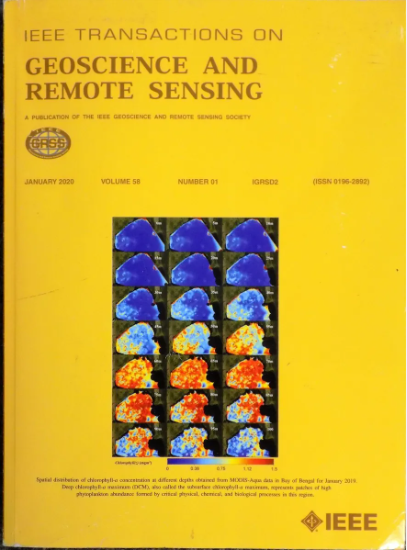以成像质量为中心的阵列优化提高合成孔径干涉辐射计性能
IF 7.5
1区 地球科学
Q1 ENGINEERING, ELECTRICAL & ELECTRONIC
IEEE Transactions on Geoscience and Remote Sensing
Pub Date : 2025-04-15
DOI:10.1109/TGRS.2025.3560780
引用次数: 0
摘要
合成孔径干涉辐射计(SAIR)代表了高分辨率成像的前沿技术,其天线阵列配置对其成像能力和系统复杂性至关重要。现有的阵列优化方法主要侧重于优化单个阵列级指标,而忽略了确保SAIR卓越成像性能所需的指标之间的复杂平衡。本文提出了一种以成像质量为中心的阵列优化方法(IQC-AO),以成像质量为最终优化指标,实现SAIR的最优成像性能。IQC-AO方法采用加速优化策略,将多目标和单目标优化技术相结合,有效地解决了求解空间大的问题。该方法不仅缩短了优化时间,而且在相同条件下提高了SAIR阵列的整体性能。此外,IQC-AO方法的通用性使其不仅适用于一维阵列优化,也适用于更复杂的二维阵列优化任务。优化后的阵列显示出更高的灵敏度、分辨率和稳定性,以及卓越的成像质量。实证结果表明,IQC-AO方法能够成功平衡退化因子(DF)和冗余等关键阵列指标,有效提高计算效率,实现高性能阵列优化。优化后的阵列配置显示出成像质量的显著提高,证实了IQC-AO方法在提高SAIR成像能力方面的有效性。本文章由计算机程序翻译,如有差异,请以英文原文为准。
Enhancing Synthetic Aperture Interferometric Radiometer Performance Through Imaging Quality-Centric Array Optimization
The synthetic aperture interferometric radiometer (SAIR) represents a cutting-edge technology for high-resolution imaging, with the antenna array configuration being essential to its imaging capabilities and system complexity. Existing methods for array optimization primarily focus on optimizing a single array-level metric, neglecting the intricate balance among metrics that is needed to ensure SAIR’s exceptional imaging performance. In this article, an innovative imaging quality-centric array optimization (IQC-AO) method is proposed, which takes imaging quality as the final optimization metric to achieve the optimal imaging performance of SAIR. The IQC-AO method adopts an accelerated optimization strategy, combines multiobjective and single-objective optimization techniques, and effectively addresses the problem of large solution space. This method not only reduces the optimization time, but also improves the overall performance of the SAIR array under the same conditions. In addition, the universality of the IQC-AO method makes it suitable not only for 1-D array optimization, but also for more complex 2-D array optimization tasks. The optimized arrays demonstrate increased sensitivity, resolution, and stability, as well as superior imaging quality. Empirical results demonstrate that the IQC-AO method can successfully balance the key array metrics such as degradation factor (DF) and redundancy, effectively enhancing computational efficiency and achieving high-performance array optimization. The optimized array configurations show a significant enhancement in imaging quality, confirming the efficacy of the IQC-AO method in advancing SAIR’s imaging capabilities.
求助全文
通过发布文献求助,成功后即可免费获取论文全文。
去求助
来源期刊

IEEE Transactions on Geoscience and Remote Sensing
工程技术-地球化学与地球物理
CiteScore
11.50
自引率
28.00%
发文量
1912
审稿时长
4.0 months
期刊介绍:
IEEE Transactions on Geoscience and Remote Sensing (TGRS) is a monthly publication that focuses on the theory, concepts, and techniques of science and engineering as applied to sensing the land, oceans, atmosphere, and space; and the processing, interpretation, and dissemination of this information.
 求助内容:
求助内容: 应助结果提醒方式:
应助结果提醒方式:


